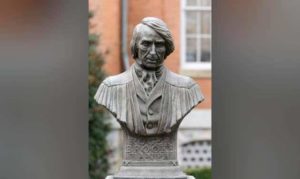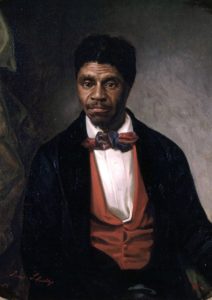
Supreme Court Justice Roger B. Taney’s bust was initially built in front of the courthouse in Frederick, Md., before it became City Hall, a spokesperson told Time magazine. (NewsOK)
Officials in Frederick, Md., have announced crews will remove the bust of a pro-enslavement Supreme Court justice from in front of City Hall and later relocate it to a cemetery.
Supreme Court Justice Roger B. Taney was the chief justice in the 1857 Dred Scott v. Sandford decision who declared that Black people, enslaved or not, were not U.S. citizens. The Historic Preservation Commission approved the removal of the statues of Taney and Gov. Thomas Johnson, who apparently was a slave owner, on Saturday, March 18. Both will be moved to Mount Olivet Cemetery at an as-yet unannounced date. A plaque describing the historic case also will be moved, according to a Thursday, March 16, news release.
Nikki Bamonti, executive assistant to Mayor Randy McClement, told officials the city and the cemetery agreed on the new placement, which also will include a statue restoration before the permanent move.

Dred Scott went to trial for his freedom in 1847. (Wikimedia Commons)
While The Frederick News-Post reported that observers cheered as crews uprooted the busts, Scott’s great-great-granddaughter Lynne Jackson told Time magazine that the busts’ removal after a 90-year presence at City Hall ruined a chance to learn about history.
“I just feel that it’s unfortunate and a missed opportunity,” she said. “It would have been a reconciliation and a healing place. Unfortunately, that won’t happen now there.”
Dred Scott was an enslaved man who lived in the free state of Illinois and the free territory of Wisconsin before moving back to Missouri, a slave state. Scott sued for his freedom, but Taney wrote in the Supreme Court majority opinion that Scott had no right to file such a claim.
Black people “had no rights which the white man was bound to respect,” Taney wrote in the majority opinion. “And that the negro might justly and lawfully be reduced to slavery for his benefit. He was bought and sold and treated as an ordinary article of merchandise and traffic, whenever profit could be made by it.”
Taney felt it was “too clear for dispute, that the enslaved African race [was] not intended to be included, and formed no part of the people who framed and adopted” the declaration that “all men are created equal.”


